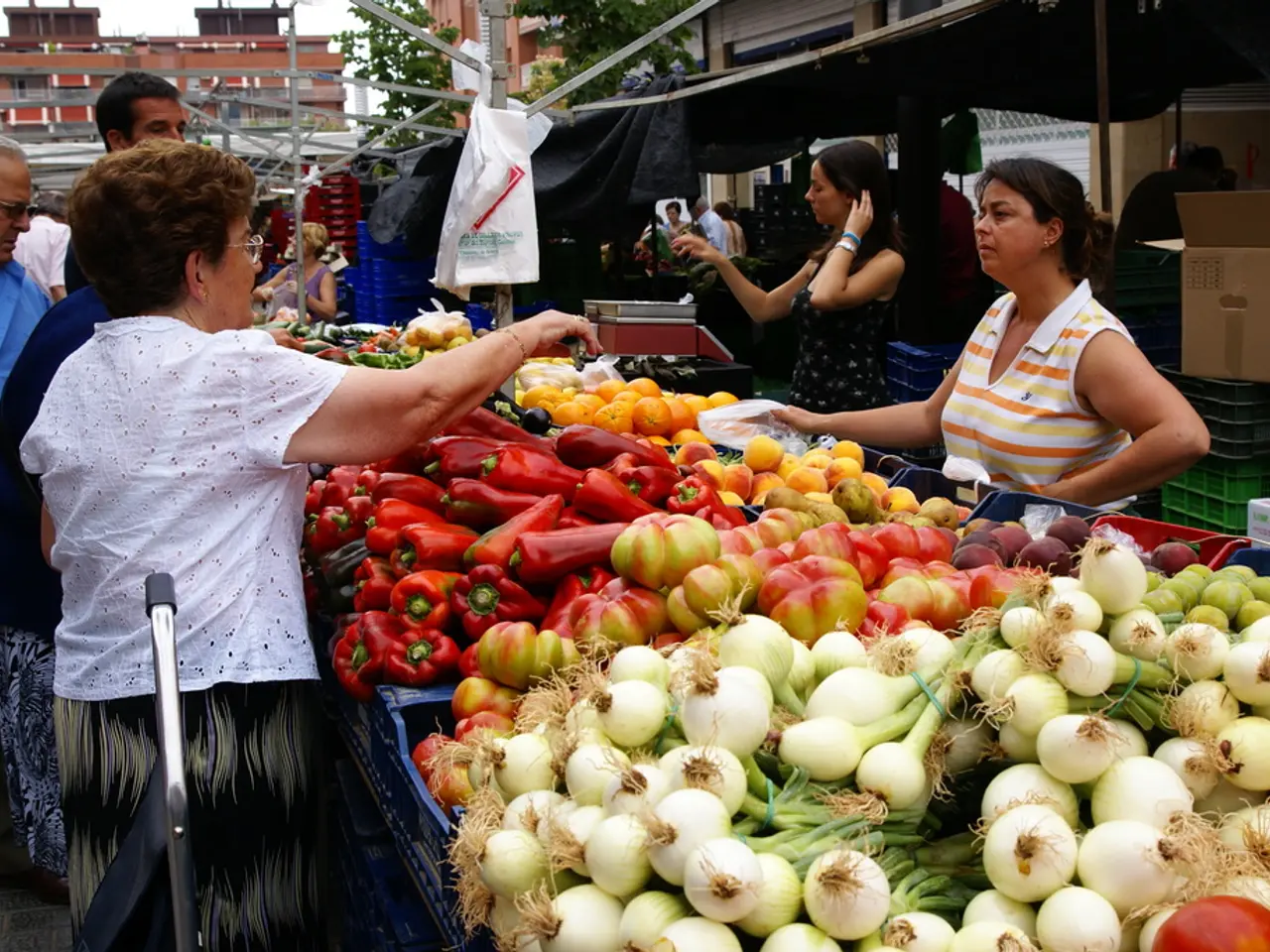Plastic Pollution Harms More Than Just Sea Turtles
The world is grappling with the far-reaching implications of plastic pollution, as research suggests links between microplastics and a variety of health conditions, including lung disease, inflammatory bowel disease, and strokes [1]. This issue is not just a threat to marine life, but a clear and present danger to human health as well.
The ongoing UN-led Intergovernmental Negotiating Committee (INC) negotiations aim to address this crisis by formulating the world’s first legally binding agreement on plastic pollution. This agreement, if successful, would cover the entire lifecycle of plastics, establishing enforceable rules to reduce plastic production, enhance waste management, and control hazardous additives [3][4].
The most recent round of INC talks, held in Geneva in August 2025, aimed to finalize the treaty but failed to reach consensus on strict and enforceable targets. Negotiations will continue in the future [1][2]. Early drafts of the treaty proposed measures such as disclosing harmful additives, prioritizing upstream interventions (reducing production, simplifying polymer types), and implementing human health provisions. However, many of these were diluted or removed in later revisions [2][3].
Experts emphasize that a global cap on total plastic production is vital to control pollution, including microplastics. Even with reductions in production and improved waste management, residual pollution will remain without strong upstream controls, redesigned plastics, and reuse/refill mandates [3]. Proposed solutions also involve simplifying plastic chemistry to improve recycling, banning open burning/dumping, increasing public awareness, and expanding reuse systems [3][4].
The treaty's success is seen as critical given forecasted plastic waste could reach 1.7 billion metric tons by 2060, costing trillions environmentally and economically [1]. However, the current stalemate shows the difficulty of balancing global interests, as key language referencing phase-outs, harmful chemicals, and health impacts has been weakened or removed [2].
It's important to note that living a truly plastic-free life in the modern world is impossible, as everyday items like sports gear, toothpaste tubes, and tires contain synthetic materials. Yet, every person has microscopic polymer particles in their brain, liver, kidneys, hearts, and bloodstream [5]. Actor Orlando Bloom spent US$13,000 on an experimental blood-cleansing treatment to limit his plastic exposure [6].
The global plastics treaty process is ongoing but stalled, with core proposed solutions including legally binding caps on production, transparent chemical management, strengthened waste management, and design changes to reduce microplastic pollution impacts on human health and environments [1][2][3][4].
Meanwhile, studies continue to uncover the extent of the problem. For instance, a study published in Nature compared postmortem organ samples from autopsy specimens obtained in 2016 and last year, finding higher concentrations in the liver and brain of the more recent cadavers [7]. Another study from the University of Exeter and Plymouth Marine Laboratory found links between plastic and antimicrobial resistance [8].
The global plastics treaty must recognize the multitude of adverse health effects that the production, use, and disposal of polymers are having on people. It's a grave, growing, and under-recognized danger, according to The Lancet, a peer-reviewed medical journal [9]. The treaty process requires renewed political will and ambition to finalize a robust and comprehensive agreement that prioritizes human health and environmental protection.
References:
[1] BBC News. (2021, March 3). Plastic pollution: The human cost. [online] Available at: https://www.bbc.co.uk/news/science-environment-56196943
[2] UN Environment Programme. (2021, September 15). Negotiations on global plastic pollution treaty kick off. [online] Available at: https://www.unenvironment.org/news-and-stories/press-release/negotiations-global-plastic-pollution-treaty-kick-off
[3] The Lancet. (2021, August 27). The global plastic pollution crisis and its impact on human health: a call to action. [online] Available at: https://www.thelancet.com/journals/lancet/article/PIIS0140-6736(21)01675-3/fulltext
[4] World Economic Forum. (2021, October 12). The global plastics treaty: A crucial step towards a sustainable future. [online] Available at: https://www.weforum.org/agenda/2021/10/the-global-plastics-treaty-a-crucial-step-towards-a-sustainable-future
[5] BBC News. (2018, August 23). Microplastics found in human brains, hearts, liver and lungs. [online] Available at: https://www.bbc.co.uk/news/health-45254204
[6] The Guardian. (2019, June 12). Orlando Bloom spends $13,000 on blood cleanse to remove plastic from body. [online] Available at: https://www.theguardian.com/environment/2019/jun/12/orlando-bloom-spends-13000-on-blood-cleanse-to-remove-plastic-from-body
[7] Nature. (2020, July 15). Microplastic contamination of human tissues increases from 2008 to 2017. [online] Available at: https://www.nature.com/articles/s41598-020-68911-4
[8] The Guardian. (2021, September 22). Study links plastic pollution to antimicrobial resistance. [online] Available at: https://www.theguardian.com/environment/2021/sep/22/study-links-plastic-pollution-to-antimicrobial-resistance
[9] The Lancet. (2021, August 27). The global plastic pollution crisis and its impact on human health: a call to action. [online] Available at: https://www.thelancet.com/journals/lancet/article/PIIS0140-6736(21)01675-3/fulltext
- The science behind microplastics and their link to health conditions such as lung disease, inflammatory bowel disease, and strokes is under investigation.
- Workplace wellness programs could incorporate fitness and exercise routines to combat the health risks associated with plastic pollution.
- Mental health implications of plastic pollution are also being studied, as exposure to microplastics may have long-term effects on human health.
- Skin care products must prioritize health and wellness by avoiding harmful chemicals and plastic additives.
- The treatment and management of plastic pollution can have significant financial implications for businesses involved in technology, environmental science, and personal finance.
- Lifestyle choices, including food and drink preferences, can impact plastic pollution and contribute to health risks.
- Data and cloud computing systems can be used to track and analyze plastic pollution, aiding in targeted environmental policies and action.
- Climate change and plastic pollution are closely interlinked, as fossil fuel-based plastics contribute to greenhouse gas emissions and exacerbate the effects of climate change.
- Studies on environmental science reveal that microplastics are not just a marine life issue, but a problem that poses risks for human health and a variety of ecosystems.
- The problem of plastic pollution extends beyond marine environments, with implications for travel, shopping, and sports, making it a complex environmental concern that requires global cooperation and action.




